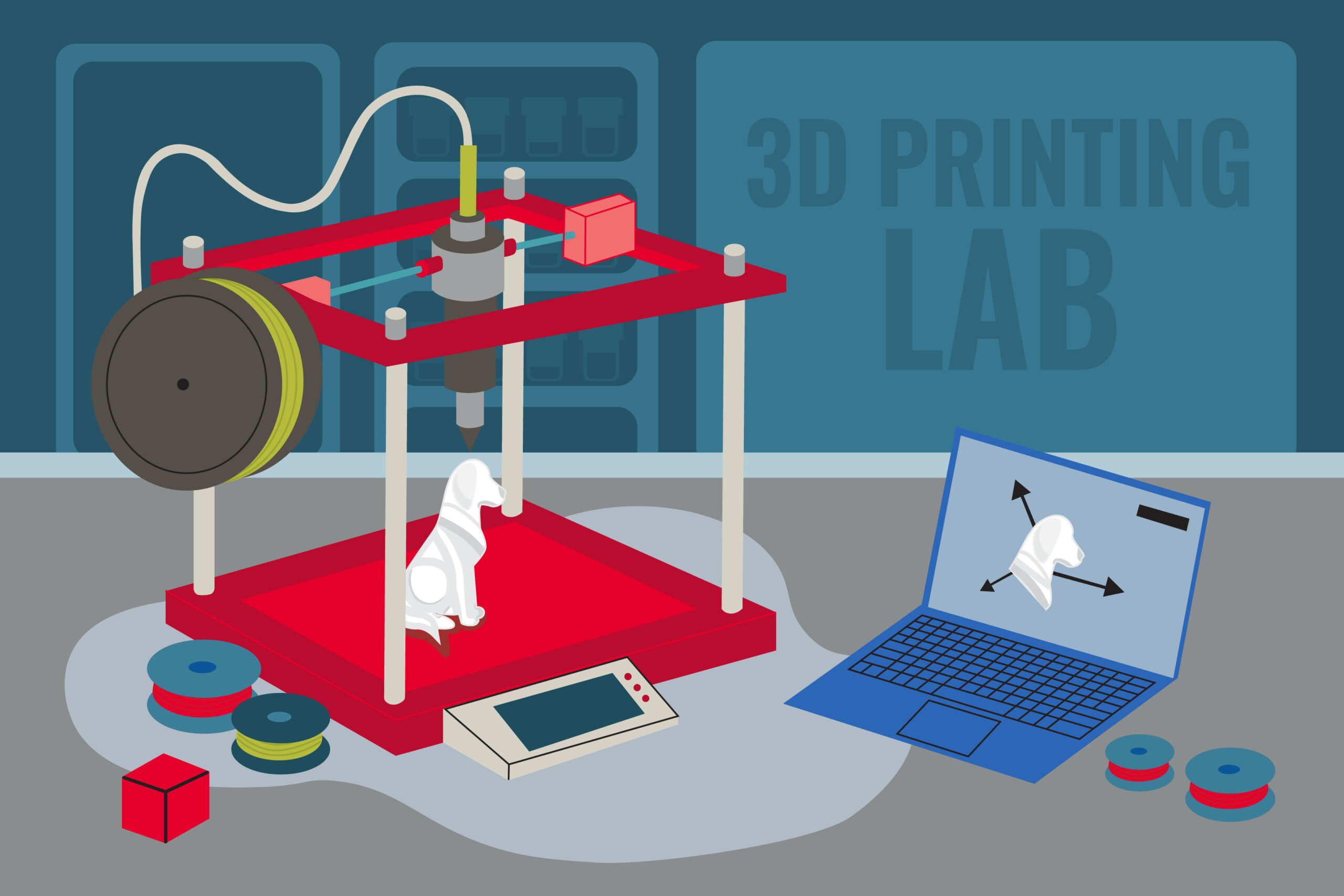In the last 40 years, 3D printing has become a vital technology for customizing tools, prosthetics, and even human organs. But for a tool that can create such complex structures, learning to use a 3D printer is simple.
How does 3D printing work?
3D printing, also known as additive manufacturing, uses computer programming to turn 2D designs into 3D objects. The two most common types of household 3D printers are fused deposition modeling (FDM) and stereolithography (SLA). Though they create similar products, FDM printers use solid filament to build 3D models layer by layer, while SLA printers use a liquid resin that is packed together to create more water-tight structures.
3D printed models are typically created using computer-aided design (CAD) software. CAD software programs are designed so people of all skill levels can learn to operate them using a basic understanding of shapes and how they fit together. You can also reverse engineer objects using scanners or a smartphone app.
In 2020, a research study from Statista found about 665,000 3D printers in circulation worldwide. That study predicted that the number of printers will quadruple by 2030. As 3D modeling becomes more widely used, people are discovering thousands of applications for this technology and raising the bar for its creative uses.
What can you make with a 3D printer at home?
Andrew Johnson is the emerging technologies librarian at the University of Georgia and the go-to person for the university’s Makerspace. When it comes to what a 3D printer is capable of, he’s seen it all. Johnson is fascinated by how increased access to the technology has led to increased creativity.
“The conversations around 3D printing have changed a lot in recent years,” Johnson says. “It’s become a highly consumable technology because not only can you get your own printer for a couple hundred dollars, but you can also download designs online and adapt them to what you need.”
Easy access to a skillset that was once solely used by manufacturing companies and R&D labs means that now anyone can bring an idea into the real world. People are using 3D printers to create:
- phone cases
- topographical maps
- prosthetic hands
- instruments
- costume pieces
- and even fake turtles.
Johnson enjoys teaching students to use the university’s Makerspace to solve problems they regularly encounter. A bioengineering student who hated taking her self-injected insulin shots created a 3D-printed device that blocked the view of the needle. Another student who was using a 3D printer for the first time created a curved reader for her visually impaired grandmother. The reader isolates text on a page and helps her grandmother to focus on one line at a time.
When specialized or hard-to-find equipment breaks down, graduate students learn to reverse engineer parts rather than spending thousands of dollars and waiting for replacement parts to arrive. Doctors can use CAT scans to print 3D models of broken bones and practice where to operate before surgery. Researchers are even making headway with bioprinting, which combines living cells with biomaterials to construct living tissue models.
A team from Tsinghua University in China recently sent a bioprinter into space that successfully printed a model of a tumor while in orbit. According to NASA, astronauts who spend six months in space get exposed to about the same amount of radiation as 1,000 chest X-rays. Having greater access to medical technology in space could mean a much safer journey for these researchers.
Why use a 3D Printer?
3D printing is the final phase in rapid prototyping, which allows us to create physical models in days, hours, or even minutes when standard manufacturing could take months. This quick turn-around can mean more accessible prototypes for hearing aids, dental retainers, and other life-changing medical equipment. It also means that when developing new products, users can find and fix issues faster because you can create many iterations in less time.
Large companies and researchers aren’t the only ones benefiting. A 3D printer can be a great resource for home repairs and decoration, creating artwork, entertaining children, or recreating the puzzle piece that got lost between the couch cushions.
“People get a specific image in their heads of the type of person who uses a 3D printer and what they’re using it for, but technology is for everyone,” says Johnson. “When you get the chance to get creative, make sure you take it.”


